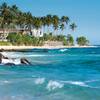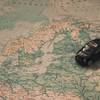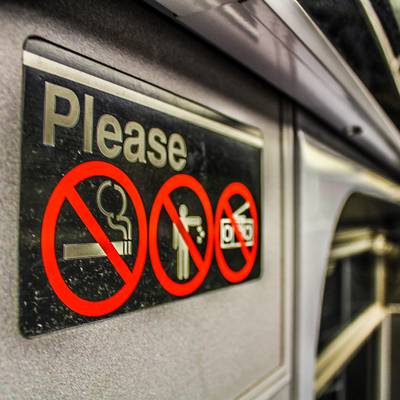General
 What is the best time to visit Costa Rica?
What is the best time to visit Costa Rica?
 What is the climate like in Costa Rica?
What is the climate like in Costa Rica?
 How do I access internet in Costa Rica?
How do I access internet in Costa Rica?
 What are the most popular destinations of Costa Rica?
What are the most popular destinations of Costa Rica?
 Where should I go in Costa Rica for a week?
Where should I go in Costa Rica for a week?
 Where should I go in Costa Rica for 2 weeks?
Where should I go in Costa Rica for 2 weeks?
 What type of adapter do I need for the outlets?
What type of adapter do I need for the outlets?
 What should I pack for my trip?
What should I pack for my trip?
Transport
People
Accomodation
Food & Drink
Sightseeing
Legal
Money
Safety & Health
Family travel

What NOT to do in Costa Rica?
Don’t buy your plane tickets last minute. With so many North Americans flying south for the winter – not to mention locals travelling home – it’s pivotal to book in advance if you want to travel during the Christmas and New Year period. Both rooms and buses can sell out weeks ahead, but by being savvy and using several transport links (such as a private shuttle to one hub, paired with a public bus from there), it’s still possible to make things work. The week leading up to Easter is another pressure point, though the parades and processions that take place during this time can prove well worth the extra effort.
Don’t skip an organized tour. Veteran independent travellers might sniff at the idea of taking an escorted tour, especially in a country where hostels and hotels seemingly line every corner and English is quite widely spoken. But many activities have both high demand and surprisingly high prices, and there are few regular public bus services around the country. A group tour is a top Costa Rica travel tip as it means you can pack a lot of experiences into one 10-day visit without fretting about availability or logistics.
Don’t expect the country to be cheap. Costa Rica is among the most expensive countries to visit in Latin America – and it’s not just pricey when compared to its neighbours. For certain supermarket items, such as bottled water and sunscreen, the country can even rival the UK and USA. If you're eating out, be aware that 10% service charge and 13% tax is added to most restaurant bills and budget accordingly. Additionally many nature sites, from waterfalls to national parks, charge an entry fee so you'll need to factor in too.
Don’t forget about the rain. Even in the dry season (between December and April) visitors to the central highlands and the Atlantic coastal plain should prepare for frequent downpours. The rainy season starts in earnest in May. In late September and October, many Pacific coast hotels and restaurants are closed for a break before gearing up again for high season. You might find a few more options on the Caribbean coast at this time of year. No matter how clear the skies look at daybreak, make sure you pack waterproof clothing and dry bags for valuables on any trips into the rainforest. And if the showers are dampening your spirits you can always head west to the sun-scorched plains of the Pacific slope.
Don’t choose the Pacific coast instead of the Carribean. One quick fix for escaping Costa Rica’s crowds is to head east instead of west. With the international airport of Liberia so close to the Pacific coastline, it’s an easily accessible beach destination. The beaches of the Caribbean coast, are much harder to reach, meaning the region is also much less developed. If you're looking for an off-the-beaten-track experience you'll enjoy exploring the Caribbean coast.
Don’t assume all food south of the border is the same. Costa Ricans do not eat tacos and enchiladas. Well, they do eat them, but only when they’re dining out at a Mexican restaurant. At its most basic, Costa Rican cuisine is hearty, inexpensive, filling, and not spicy. You’ll certainly get your share of chicken and pork and rice and beans. Indeed, you’ll swear that gallo pinto (literally “spotted rooster”), the country’s signature dish, is following you everywhere. Give this mix of rice, black beans, and finely chopped vegetables a try, and dress it up, Costa Rican style, with tortillas and sour cream. Some chefs there are doing amazing things with local and international cuisine, especially in locales with large foreign populations, such as San José, the Pacific coast’s Manuel Antonio and Tamarindo, and Puerto Viejo de Talamanca on the Caribbean side.
Don’t be afraid to speak Spanish. Most folks associated with the tourism industry there speak English – good English at that – so never fear if your Spanish is nonexistent. But don’t be afraid to dust off and pull out whatever Spanish you might know. Greet people with a hearty “Buenos días” (good morning), “Buenas tardes” (good afternoon) and “Buenas noches” (good evening). Sprinkle your requests with those “Por favor” (please) and “Gracias” (thank you) niceties. You’ll elicit a smile. Plus, you have to love a people whose “You’re welcome” response is not the standard “De nada” (it’s nothing) heard in other Spanish-speaking countries, but rather, “Con mucho gusto” (with much pleasure).
Don’t try to see the entire country in one trip. It should be easy to see all of Costa Rica in two weeks, but what’s that they say about the best-laid plans? Once you arrive, you’ll see how mountainous the center of the country is, and that the highway system leaves something to be desired. It takes a lot longer to get from place to place than you realize. Map out a couple of locales for a week or three or four stops in two weeks and get to know them well. You’ll appreciate that slower pace. And if you’re like many visitors, during your flight home, you’ll start planning ways you can get back to Costa Rica. What you didn’t see on your first trip, you’ll catch the next time around.
Don’t rely on addresses. Looking for standard street addresses? If they exist, folks in Costa Rica generally don’t know them or use them. Costa Rica relies instead on a charming, exasperating system of describing places in reference to landmarks, where “100 meters” denotes the distance to the next cross street, regardless of the actual measurement. “200 metros al norte y 50 metros al oeste de la iglesia” means your destination is two blocks north and a half-block west of the church. Modern Costa Rica uses anything – a gas station, a McDonald’s, a mango tree – as a reference point. There is a bright side: Costa Ricans are amazingly helpful. Keep asking. You’ll get where you’re going eventually.
Don’t feel obligated to go on a canopy tour. Costa Rica gave the world the zip-line canopy tour, which whisks you through the treetops courtesy of a cable, helmet, and a secure harness. They’re great fun and have become the country’s signature tourist activity. Gauge your willingness and ability carefully before you set out, however. Remember: there’s no turning back once you start. There are other, more sedate ways to see the rainforest canopy, anyway. A few aerial trams (you’re seated in a slow-moving gondola car) and hanging bridges (you walk) offer a better opportunity to take in the treetop nature spectacle than you get with the high-energy zip-line tours.
Don’t swim alone. You don’t need to venture out far to feel the wicked riptides that plague many of the hundreds of beaches there. (Conversely, these are exactly the conditions that make Costa Rica so popular with surfers.) On top of that, lifeguards patrol few beaches and you’ll see few warning signs. Take utmost care in the water.
Don’t smoke in public. Costa Rica is smoke-free, with lighting up prohibited in all public buildings. That takes in all businesses, so the law governs bars and restaurants too. The smoking ban also includes your hotel room and all public areas, indoors and outdoors, of all lodgings. You’ll see the red, white, and black PROHIBIDO FUMAR signs everywhere. Compliance is good; fines are steep for both the errant smoker and the business.
Don’t believe Google Maps. When it comes to driving times and distances, never believe Google Maps. The distances are accurate, but not the times. It's better to add 30 minutes to 1 hour to the estimated Google Maps driving time because driving in Costa Rica is not that straightforward or easy! Roads in Costa Rica are notorious for being in bad condition and it is very much true. Then you have those big and very slow trucks that cause congestion because most roads have only one lane making it impossible to pass. So if you get stuck behind these trucks, that will prolong your driving time greatly. In addition, many routes are not as the crows fly. Many of them have very windy roads, adding even more driving time since you need to go slow. So on a map, the destinations may not look far apart but the road is not straightforward.
Don’t forget to use sunscreen. Nothing is worse than getting a horrible sun burn your first day in Costa Rica and being uncomfortable and in pain for the rest of your trip. The sun is very strong there so make sure you put on ample sunscreen to protect yourself.
Don’t buy mosquito repellent on the spot. As pretty much everything else, insect repellent is very expensive in Costa Rica. Bring it along from home if you think you will need.

What legal problems might I face in Costa Rica as a foreigner?

What local dishes to try in Costa Rica?

What alcoholic drinks to try while in Costa Rica?

What can I bring home from Costa Rica?
